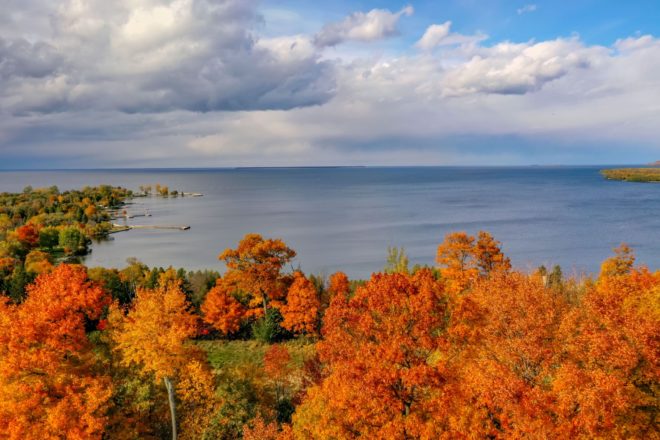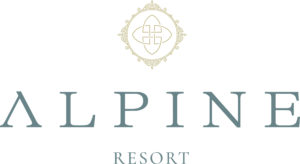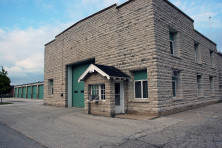Why These Land Sales Moved at a Snail’s Pace
- Share
- Tweet
- Pin
- Share

Completed and accepted conservation plan paves way for lot sales, with a conservation easement designed to protect snails
Completion of a habitat-protection plan for rare snails made it possible for Alpine Resort ownership to sell blufftop lots that possess million-dollar views.

Following the fall 2023 Wisconsin Department of Natural Resources’ (DNR) approval of a 40-page conservation plan, Alpine Resort Acquisition Co. completed the sale of three out of five available lots in late November and December on a strip of land between the Hillside Trail road and the Niagara Escarpment, said Jacinda Duffin, True North Real Estate broker.
The lots have north-facing views through DNR-approved “viewing corridors” to the bay and Egg Harbor. In early January, there was a pending sale of one additional lot, leaving one more of the five lots – priced between $900,000 and $1.25 million – currently on the market, Duffin said.
Duffin said the lot buyers showed patience, waiting from summer to late autumn for the Alpine and DNR to work out details, such as allowing the cutting of some taller hardwoods while conserving and planting all shorter, shade-producing native trees and evergreens.
“The holdup has been on our side, making sure that we were doing everything that the DNR wanted and working to protect the habitat as much as we can,” Duffin said. “We have been working with the DNR and Evergreen Consultants of Green Bay to revise a conservation plan and have been successful in doing so.”
Duffin said “it’s really admirable” that Alpine ownership chose to plat large lots instead of developing condos or platting up to 18 lots, as village zoning would have allowed.
Covenants prohibit short-term rental of these single-family homes. The DNR prohibits the lot owners from discarding yard waste, cutting any trees – or utilizing in any way a 20- to 40-foot-wide buffer zone near the top of the escarpment where two types of endangered or threatened snails live in cliff crevices. The snails also live at the base of the cliffs and in the talus slope of broken rock and soil just downhill from the cliffs.
There are six tiny species of snails indigenous to the microclimate along the escarpment and are considered glacial relics, according to Jeff Nekola’s studies of Wisconsin snails. Among those are 2-millimeter Midwest pleistocene vertigo land snails, listed as endangered in Wisconsin. They – as well as the cherry-pit-sized cherrystone drop snail – live on and along Door County’s cool, north-facing cliffside niches where the snails have thrived for 10,000 years, said Chad Fradette of Evergreen Consultants.
Alpine Resort Acquisition Co. declined a request for comment at this time, but Fradette’s company is the liaison between the Alpine and the DNR. Fradette said the plan to protect the snails takes a commonsense approach.

“Is there a way we can have views for homes and protect snail habitat at the same time?” Fradette said.
The plan that protects the snail habitat, Fradette said, includes Alpine Resort Acquisition Co. offering the DNR perpetual access to inspect the site, and keeping the conservation easement area off-limits to the public. The company will preserve and plant white cedar and other native shade-producing species that will keep the cliff cool. Fradette said the plantings will be on land that previously accommodated a grassy fairway for the golf course’s fourth nine that was built in 1999 and closed in 2020.
“Shade at the top helps keep the microclimate in check,” Fradette said. “It keeps the heat from going down and drying the slope out. In the spring we’re going to be planting thousands of cedars along the top of the escarpment. The Alpine owner has made a big commitment to snail-habitat restoration and we don’t want to do anything that harms them.”
A portion of funds from lot sales – an escrow fund of 10% of lot-sale proceeds up to $200,000, according to the fall 2023 conservation agreement between the DNR and Alpine – will cover future restoration work and maintenance of the conservation area where former Alpine owners blasted away parts of the escarpment in 1999 to build a short, par-three golf hole, as well as a bluffside cart path and rock cut, Fradette said. That cart path will be removed, and cedars should quickly fill in.
Fradette said restoration eventually could include using some of the rubble from that former blasting to restore the talus slope.

In addition, the Alpine will also make a $150,000 donation to the DNR for snail-conservation work in Door County and north of Green Bay, Fradette said.
While the conservation plan has been approved, the DNR must still accept the 9.22-acre buffer-zone easement and access right-of-way. Jim Lemke, Real Estate Section Chief for the DNR Bureau of Facilities and Lands, said he would speak in February in support of acceptance before the DNR’s Natural Resources Board.



